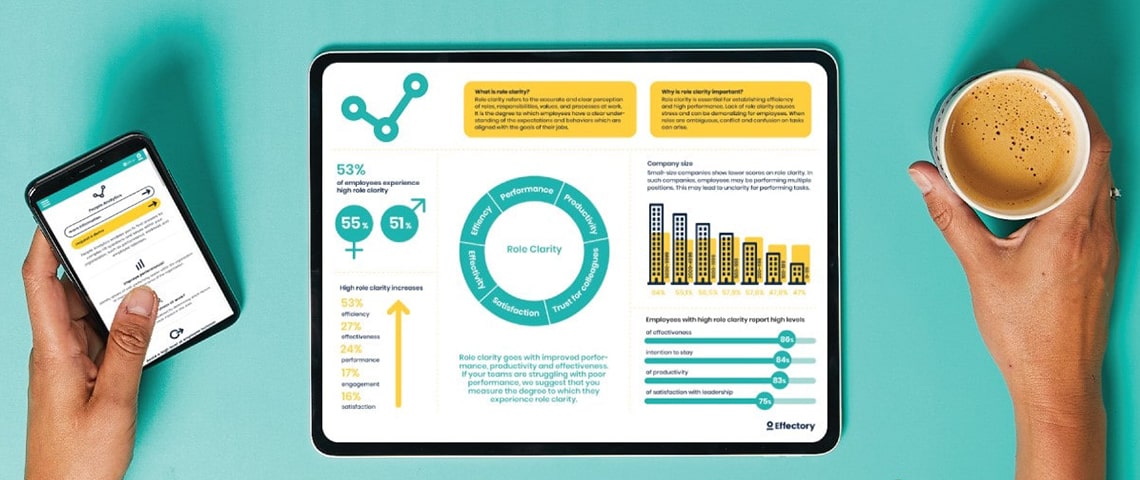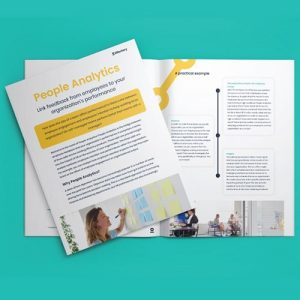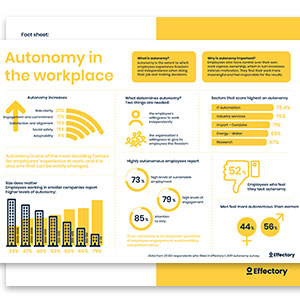Recently, a director of a large company asked me, following their latest employee survey, whether or not Effectory could transfer the individual employee data. The reason being: The Big Data would be useful to combine with their HR data analytics project. They then went on to describe that this offered an excellent opportunity to further rationalization of the organisation.
HR data analytics: a powerful tool, used with integrity

Their words, sounded reasonable and wise. But it’s what the director said between the lines, they wanted to uncover which employees are the least engaged and committed – and likely the least productive. Something the organisation might take into consideration later. For example, when employees have to reapply for their own job at the next round of reorganisation.
Confidentiality for hr data analytics
I was shocked by the director’s question. I suddenly realised that our HR data analytics tools could be used as weapons. You can compare us to a kitchen equipment manufacturer, who sells sharp knives so customers can enjoy delicious meals. Those knives are not made to be stabbed in someone’s back.
Similarly, our research tools are not developed for the purpose of excluding employees. We don’t believe in using employee feedback tools in this manner, unlike many of our competitors.
Confidentiality is very important to us. We are committed to ensuring the anonymity and safety of the employees who use our hr data analytics tools. That’s one reason why our surveys are only applicable to samples on a minimum size. So that no one can trace back research results to any one individual.
Create impact with People Analytics
Link feedback from employees to your organization’s performance
DownloadHR Analytics KPI
We are regularly asked to conduct HR Analytics projects. We’re open to conducting them. We’re happy to link the engagement and commitment of employees to various departments, teams, functions and management. Answering questions like: Which departments are less enjoyable to work in? Where are the bad managers? In what roles or functions is engagement and commitment relatively low?
Before we start, we first investigate the intent of the organisation. When an organisation wants to us HR data analytics to expel groups or individual employees from the labour market, we decline the task. Like in the above example.
When organisations use HR Analytics KPI with the right intentions, like finding out which group of employees need additional attention to be a good employer, we readily help and actively support this. And as such, we guarantee the confidentiality of employees.
HR Analytics: Autonomy data infographic & fact sheet
Get data-driven insights about autonomy in the workplace by downloading this infographic and fact sheet.
DownloadBecoming a sustainable employer with HR data analytics
When companies are only focused on their intrinsic interest, they do not include employees to achieve their organisational goals, they are promoting a culture of anxiety. In the short term, they may reach increased profits, but in the long run, they will pay dearly. Employees will grow anxious, and will play it safe. The organisations become unilateral, ponderous and conservative which can be fateful in an age where you need to be increasingly viable and innovative.
HR data analytics should not focus purely on the organisation interest, but also on the individual, social and customer interest. I believe, that when you work well with employees, you’ll get back more. Employees will dare to think freely, be creative and share ideas. They think about the purpose and goals of the organisation and serve customers better. That open attitude makes an organisation viable and successful. This makes becoming a sustainable employer, a rational choice.
Our employee surveys help organisations to sustainably improve from within. The best ideas are often found amongst your own employees.

